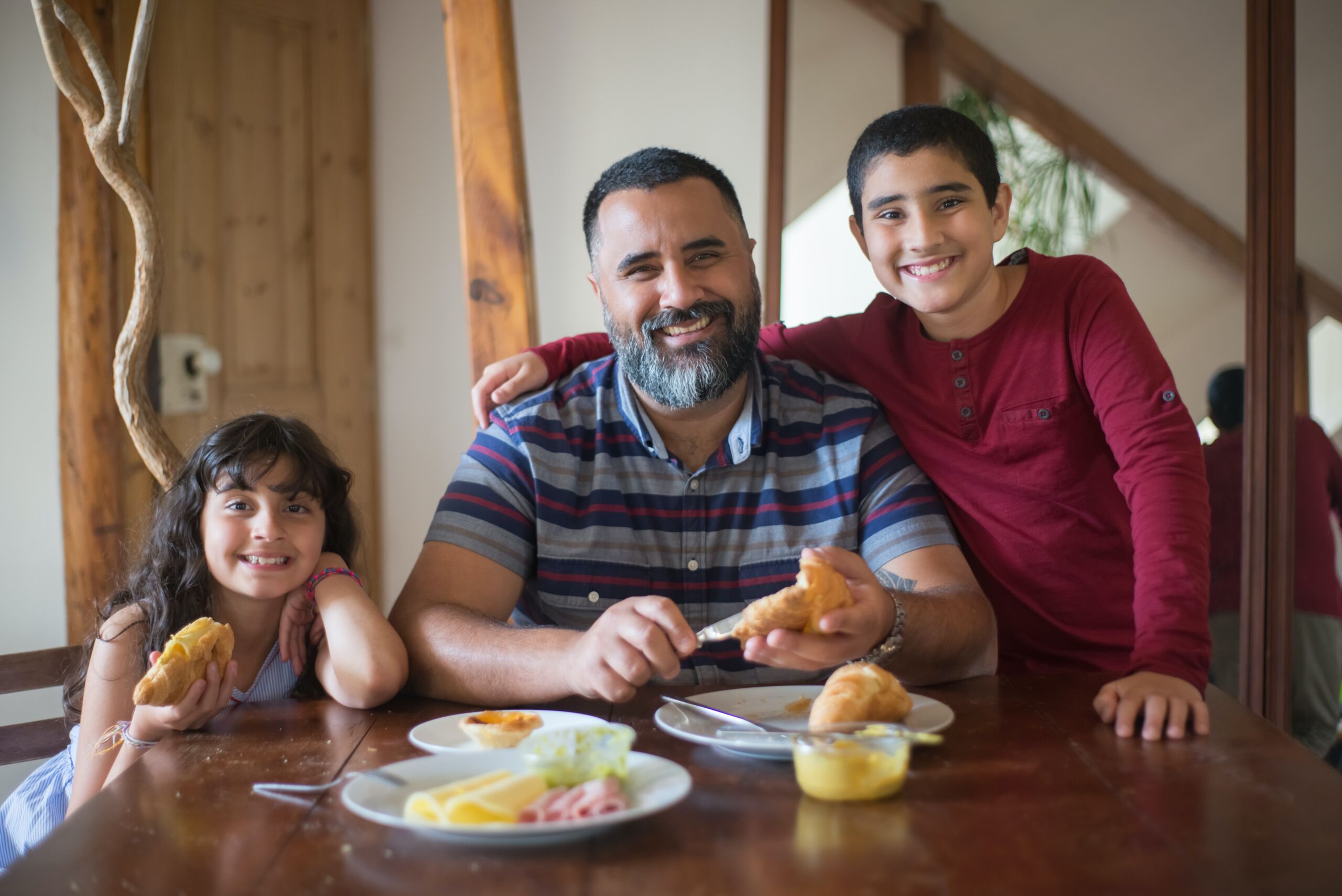
FH Summary: Emotional literacy, the ability to recognize, understand, and regulate emotions, is a fundamental skill that contributes significantly to a child’s overall development, setting off an upward spiral of growth. The development of emotional literacy, which should be regarded as one of the first essential habits to instill in children, can be fostered through role modeling, creating a safe emotional environment, building an emotional vocabulary, nurturing empathy, and introducing mindfulness techniques. With patience, consistency, and abundant love, parents can effectively nurture emotional literacy in their children, thereby laying a strong foundation for their holistic development, and First Habits is committed to guiding parents through this crucial journey.
In the ever-evolving discourse of child development, one crucial component often gets overshadowed by academic achievements and physical development. This underemphasized component is none other than emotional literacy – a powerful tool that, when honed right from childhood, can play a monumental role in a child’s overall growth. As an authority on optimizing children’s growth through the cultivation of key habits, First Habits is here to shed light on this crucial subject. Today, we dive deep into the essence of emotional literacy, its role in creating an upward spiral in child development and the ways you, as parents, can foster this all-important skill in your children.
Emotional Literacy: The Silent Catalyst
At its core, emotional literacy is the ability to recognize, comprehend and regulate emotions. This ability, much like the more commonly known literacy skills of reading and writing, opens up a new world of understanding – for oneself and others. Children well-versed in the language of emotions are more adept at expressing their feelings and needs. They exhibit superior problem-solving capabilities and display a higher level of resilience when faced with adversity. Each of these factors, in turn, contribute to the all-round development of the child.
But why is emotional literacy such a critical First Habit to instill in our children? Marc Brackett, Ph.D., the Founding Director of the Yale Center for Emotional Intelligence, provides a compelling explanation: “Emotions are data. Our emotions are a signaling system. They’re our brain’s way of prioritizing things for us.” By teaching our children to read and interpret this emotional data, we are essentially equipping them with a valuable skill set that enables them to navigate their world with greater self-assurance and empathy.
The Upward Spiral Phenomenon: Emotional Literacy as the Keystone
Habits, as we know, are mighty. That’s the entire premise of this platform, First Habits. They subtly yet significantly shape our lives, for better or worse. The habits created during the formative years of childhood are especially impactful, setting the stage for a lifetime of behaviors, attitudes and mental health. The right habits can catalyze an upward spiral of positive growth and development, while unmanaged or detrimental habits can set in motion a negative spiral.
Emotional literacy, firmly rooted in a child’s behavior, can act as the catalyst for this “upward spiral” effect in your child’s development. Let’s break down how this process unfolds: A child who can identify and articulate their emotions is naturally more capable of effective communication. Improved communication leads to stronger relationships with peers and adults alike, which enriches the child’s social experiences. These positive social experiences, in turn, feed back into their emotional stability, fostering self-confidence, resilience and a general sense of happiness and well-being. Each positive experience becomes a stepping-stone to the next, creating a self-propelling upward spiral of holistic growth and development.
Fostering Emotional Literacy in Children: An In-depth Guide from First Habits
With the importance of emotional literacy established, the next crucial step is to understand how to nurture this skill in our children. Here, First Habits offers a comprehensive guide, backed by extensive research and practical wisdom:
1. Be an Emotionally Literate Role Model
It’s no secret that children learn a lot through observation. As their first and most influential role models, parents can have a profound impact on a child’s emotional literacy. Show your child what emotional literacy looks like in practice: identify and articulate your feelings in ways your child can understand. Demonstrate healthy ways to express emotions and manage emotional situations. Let them see that it’s okay – and in fact, crucial – to express both positive and negative emotions.
2. Foster a Safe Emotional Environment
Children need to feel safe to express their feelings openly. Create a home environment where discussing emotions is as commonplace as discussing what happened at school or what’s for dinner. Encourage your child to share their feelings – whether of joy, sadness, anger, or fear – and validate these feelings. Let them know that all emotions are valid and it’s okay to share them. This safe emotional space is a significant step towards developing emotional literacy.
3. Build the Emotional Vocabulary
Just as a child learning to read needs to know the alphabet, a child learning emotional literacy needs to have a robust emotional vocabulary. Start with the basics: happy, sad, angry, and scared. Then, gradually introduce more complex emotions like frustrated, disappointed, excited, proud, and so forth. Having the words to express their feelings will empower your child to communicate more effectively and confidently.
4. Feeling vs. Emotions
In your discussions about an emotional vocabulary with your children, it is essential to differentiate between feelings and emotions. The terms “feeling” and “emotion” are often used interchangeably, but there are subtle differences between the two perceptions. Emotions start as a sensation in the body and we are often not conscious of their existence – they tend to manifest in the unconscious mind. They can be thought of as “readouts” of the internal state of our body. Emotions at their basic level include fear, anger and joy.
Feelings, on the other hand, are a conscious experience, although not every conscious experience, such as seeing or believing, is a feeling. Feelings can be defined as sensations resulting from emotions. A fundamental difference between feelings and emotions is that feelings are experienced consciously, while emotions manifest either consciously or subconsciously. Emotions also tend to be more short-lived than feelings.
Consciously walking through these subtle differences with your child can improve their emotional vocabulary and their ability to understand how certain feelings, whether positive or negative, occur. For instance, if your child is hungry, it is important to identify that the sensation of being hungry might then generate a whole host of negative feelings and that the underlying cause is the sensation of being hungry and that the feelings are likely to pass as soon as the underlying hunger is addressed.
5. Nurture Empathy
Empathy – the ability to understand and share the feelings of others – is a powerful skill that complements emotional literacy. Help your child learn to recognize emotions in others. This understanding can be fostered through discussions about characters in children’s books or movies. Ask questions like, “How do you think this character is feeling?” or “How would you feel if you were in their situation?“
6. Introduce Mindfulness Techniques
Mindfulness, the practice of focusing on the present moment, can be a potent tool in nurturing emotional literacy. It encourages children to pay attention to their feelings without judgement. Simple mindfulness exercises like deep breathing or body scan can help children tune into their emotions, further promoting emotional literacy.
First Habits’ Commitment to Your Child’s Development
At First Habits, we’re passionate about helping parents like you create the best possible foundation for your children’s holistic growth and development. We’re here to empower you with practical, research-based strategies to instill the most impactful first habits in your child.
Cultivating emotional literacy is not a one-time task—it’s a journey that unfolds over time. It requires patience, consistency and abundant love and understanding. And the rewards – an emotionally aware, resilient, and empathetic child equipped to navigate the complexities of life – are more than worth the effort.
In conclusion, emotional literacy stands as a cornerstone for the elevated foundations of childhood development. It sets off an upward spiral in various aspects of a child’s life, from enriched social interactions to enhanced academic performance. Teaching this skill might seem daunting initially, but it’s crucial to remember that you’re not alone on this journey.
First Habits is here with you, every step of the way. For more detailed tips, insights, and resources on nurturing emotional literacy and other key first habits, visit our website and sign up for our weekly newsletter. Together, we can ensure that every child enjoys the benefits of strong foundational habits, paving the way for an upward spiral in their developmental journey.







